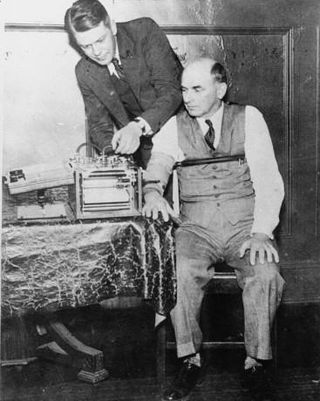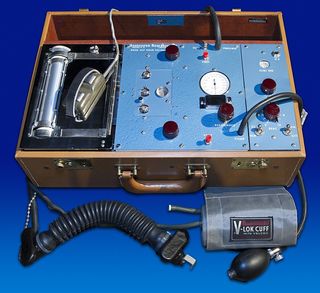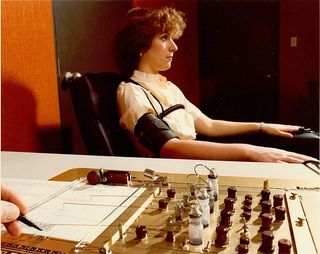CCSO 911 communication officers wanted; starting pay increased - Citrus County Chronicle
CCSO 911 communication officers wanted; starting pay increased - Citrus County Chronicle |
| CCSO 911 communication officers wanted; starting pay increased - Citrus County Chronicle Posted: 22 Sep 2020 07:32 AM PDT Tiana Jarrell's eyes scoured a cluster of computer monitors with maps and details on 911 calls. Her hands glided across keyboards, ready to take a sudden phone call for help and relay the emergency to appropriate responders. Jarrell's first shift alone "on the floor" of the Citrus County Sheriff's Office's 911 Communications Center inside the Emergency Operations Center was July 4, 2020. Independence Day seemed somewhat fitting as it marked the end of Jarrell's 700 hours of paid intake training after her hiring in February. Jarrell was drawn into the job because of its parameters, qualification requirements and benefits. "The obvious rewards are helping people, and I think that goes in hand with the challenges," she said, "because it's a serious emergency happening in their life, and it can be tough to find out how to help them and getting them help as soon as possible." Communication officers are the first responders to almost every emergency. "They take every call, they know everything that's happening and, unlike they do out in the field, they don't have the closure those folks do" said Chris Evan, director of emergency operations and its 911 center.  Chris Evan, director of emergency operations and the 911 communications center. It's a job many people don't think of when they look for a career in public service; however, without it, police, firefighters and EMS medics would be almost helpless. "This is still a way to give back to their community," said Mike Story, the sheriff's communications manager and training coordinator. Nationwide, call takers and dispatchers are in short supply. The sheriff's office employees 30 full-time and 10 on-call communication officers. Its employment goal is to get to 49. "We've never, ever been at full staff; it's always challenging," Evan said, "and we really strive to get those numbers high." Whether it's a 12-hour shift conflicting with a growing family, another job opportunity or a promotion, communication officers have become a rare breed of employee.  "There are a lot of factors that come into play why people leave, but, at this point, we've had so many people want to leave," Evan said. "This is a rewarding career and offers wonderful benefits for anybody who wants to be employed here in a family environment." Low pay also dissuaded potential applicants from joining, and the sheriff's office made strives to push for an increase. Since the spring, Sheriff Mike Prendergast has boosted pay for his agency's communication officers from $13.23 an hour to $15.23 an hour, equating to a starting salary raise of $33,134. In 2017, the average pay for communication officers across the U.S. was at $19.06 an hour for a $39,640 salary, according to the National Emergency Number Association. "The sheriff has done a good job lately at addressing our pay issue," Story said. "It's nice for us to be competitive with the workforce in general." After they're hired, communication officers can receive pay while they undergo their 700 hours of intake training. Learning how to work additional radios in the future can also mean more pay raises. Along with the pay incentives, communication officers can take advantage of their job's medical, dental, vision benefits along with being a part of the Florida Retirement System. They can also access the wellness center, which offers free healthcare services and medications. Thinking of pursuing a college degree while working as a communications officer? The sheriff's office will help reimburse tuition. Evan said young job seekers out of high school can secure themselves a stable profession with solid benefits. "You don't have to have a college degree to work here," he said. "You can get a good-paying job with great benefits without the student debt." To apply for a communications officer position with the sheriff's office, contact Deputy Jason Boyer at 352-341-7452 or jboyer@sheriffcitrus.org. Qualified communications officers should be quick-thinkers, have good morals and be able to multitask. Jarrell said she's always learning how to be better. "Always be willing to learn … there's so many different nuances in so many different situations," she said. "Always being a student first is always important; I have to be on top of it." There's a rigorous start to the hiring process for communication officers. Prospective employees must pay attention when completing their lengthy application. "It has to be 100% accurate and updated," Story said. Leaving out information, whether on purpose or not, can lead to issues when an applicant is questioned on it during the sheriff's office's lie detector test. Being untruthful during the lie detector test is also not a good idea. Story and Evan said the agency will work with applicants with questionable pasts. "It's about being truthful and honest," Story said. Tattoos on the face, neck and hands could also be disqualifying factors if they can't be covered. Sheriff's officials also did away with their agency's tobacco-free policy, allowing employees to use nicotine products while off duty. There can be a lot of satisfaction in helping someone, and communication officers do more than they realize for a person who dialed 911. "You may have taken that simple call, but step back think of that impact," Story said. "Everyday, they're making an impact everyday in someone's life." |
| Do Lie Detector Tests Really Work? - Psychology Today Posted: 14 Jan 2020 12:00 AM PST In February of 1994, the FBI arrested Aldrich Ames, who had been a CIA employee for 31 years. Ames was arrested and charged with espionage. He was a Russian spy. For nine years, he had been passing secrets to the Russians in exchange for over $1.3 million. His spying activities had compromised dozens of CIA and FBI operations. Worse yet, his treacherous crimes had led to the deaths of several CIA spies and the imprisonment of many more. During the time that Aldrich Ames was operating as a Russian spy, the CIA had twice given him a lie detector test. Despite having no special training in how to defeat a lie detector test, Aldrich passed both times.  Source: wikimedia The modern polygraph, better known as the "lie detector test," is a fascinating little instrument with a long and controversial history. The earliest version a polygraph instrument was developed in 1921 when John Larson cobbled together previously developed measures of respiration, heart rate, and blood pressure that had individually shown promise as a measure of lying. Technological developments continued, and the modern polygraph is now an integrated, state-of-the-art, computerized system that continuously monitors blood pressure, heart rate, respiration, and perspiration. The theory behind the polygraph is that when people are lying, they experience a different emotional state than when they are telling the truth. Specifically, it is thought that when people are lying, especially in high stakes scenarios such as police interrogations, they are anxious or afraid of being caught in a lie. When guilty people are asked questions that would reveal their guilt (e.g., Where were you last Tuesday?), and they lie, the fear of being detected causes increased activation of their sympathetic nervous system. This activation leads to an increase in heart rate, blood pressure, respiration, and perspiration. These changes are part of the fight-or-flight system that initiates whenever was are scared. You have probably felt your heart pounding or your palms sweating when faced with danger, be it a vicious dog, an angry boss, or an upcoming exam.  Source: wikimedia The polygraph is designed to detect those subtle changes in a person's physiological responses when they lie. The general idea is that when a person is being honest, their physiological responses remain stable under questioning, whereas a guilty person's heart will race. One of the most common polygraph procedures is called the comparison question test (also called the control question test). The examinee is asked relatively benign questions such as "Where do you live." They are also asked questions that are not relevant to the crime, but which would likely trigger an emotional reaction such as, "Have you ever told a lie?" They are then asked questions about the alleged crime such as, "Did you steal the documents?" The premise of the comparison question test is that a guilty person will have a much stronger physiological reaction to the crime question, whereas an innocent person will not. The polygraph is used in criminal investigations, although it is generally not admissible as evidence in a trial. It is also used as a pre-employment and continuing employment screening tool for many federal employees who work in sensitive positions, such as CIA agents and FBI agents. Private businesses, however, cannot force their employees to submit to a polygraph test. So, does the polygraph actually work? Are the results accurate? It does work much of the time. Typically, when someone is lying, a well-trained polygraph examiner can tell. It is not 100% accurate though. The American Polygraph Association is the world's leading association dedicated to the use of evidence-based scientific methods for credibility assessment. It is an organization whose members are largely polygraph examiners. They estimate the accuracy of the polygraph to be 87%. That is, in 87 out of 100 cases, the polygraph can accurately determine if someone is lying or telling the truth. That sounds pretty impressive, but it is important to keep in mind that the polygraph is failing 13% of the time. The federal government sought an unbiased evaluation of the polygraph, so they tasked the National Academy of Sciences with a full investigation of the polygraph's accuracy. In 2003, this large team of notable scientists came to the conclusion that the polygraph was far less accurate than the polygraph examiners had claimed. Some scientists have claimed that the accuracy may be closer to 75%. This lackluster performance is the reason why polygraphs are not used as evidence in criminal trials. They just cannot be trusted.  Source: wikimedia For more clear evidence that the polygraph is unreliable, just look back to the Alrich Ames case mentioned at the top of this article. Ames lied during his polygraph examinations at the CIA, and he passed each time. In this case, the lie detector test failed. When asked how he passed the polygraph test, Ames said that he followed the advice of his Russian handlers. They told him, "Just relax, don't worry, you have nothing to fear." The Russians knew that the polygraph was flawed. They knew that it was only accurate if the examinee was worried and anxious. They knew that if Ames could just relax, he would pass. |
| You are subscribed to email updates from "lie detector test online" - Google News. To stop receiving these emails, you may unsubscribe now. | Email delivery powered by Google |
| Google, 1600 Amphitheatre Parkway, Mountain View, CA 94043, United States | |
Comments
Post a Comment